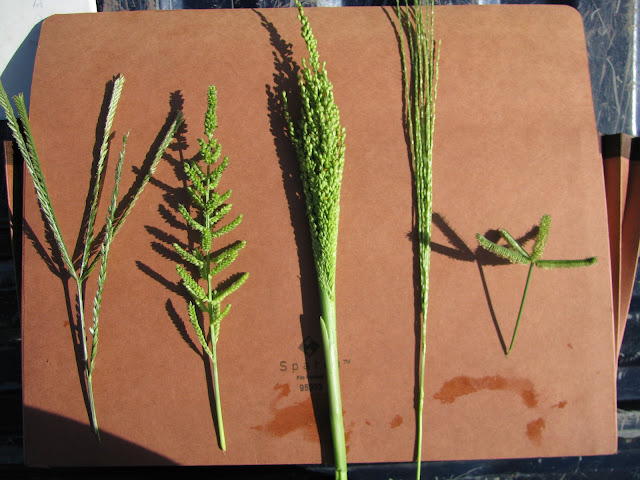Dr. Culpepper recently gave you his 2 cents worth about the control of goosegrass in the most recent UGA Cotton Newsletter – July 2022 (https://www.ugacotton.com/vault/file/July-2022-Cotton-Team-Newsletter.pdf). Thought I would add my 3 cents worth as well since my ears are also bleeding from all the phone calls.
1) The #1 enemies of POST herbicide applications are big weeds and dry weather. If POST graminicides (i.e. Select, Poast, Fusilade, or generics) are applied applied to large plants, they will not work. A flowering goosegrass plant is way too big!!!

Seed-heads of common annual grasses. From left to right: goosegrass; barnyardgrass: Texas panicum; crabgrass; and crowfootgrass.
2) Check out this greenhouse data from a few years ago. Keep in mind that herbicides are much more active in the greenhouse than in the field. The take home message here is that rate and timing are very important.

3) Growers should expect less grass control with graminicides if applied in tank-mixes with certain fungicides or broadleaf herbicides (Cadre, 2,4-DB). Additionally, grass control can be reduced when graminicides are applied after an application of Cadre has already occurred. The same thing happens with Cadre/Classic/Florida beggarweed.